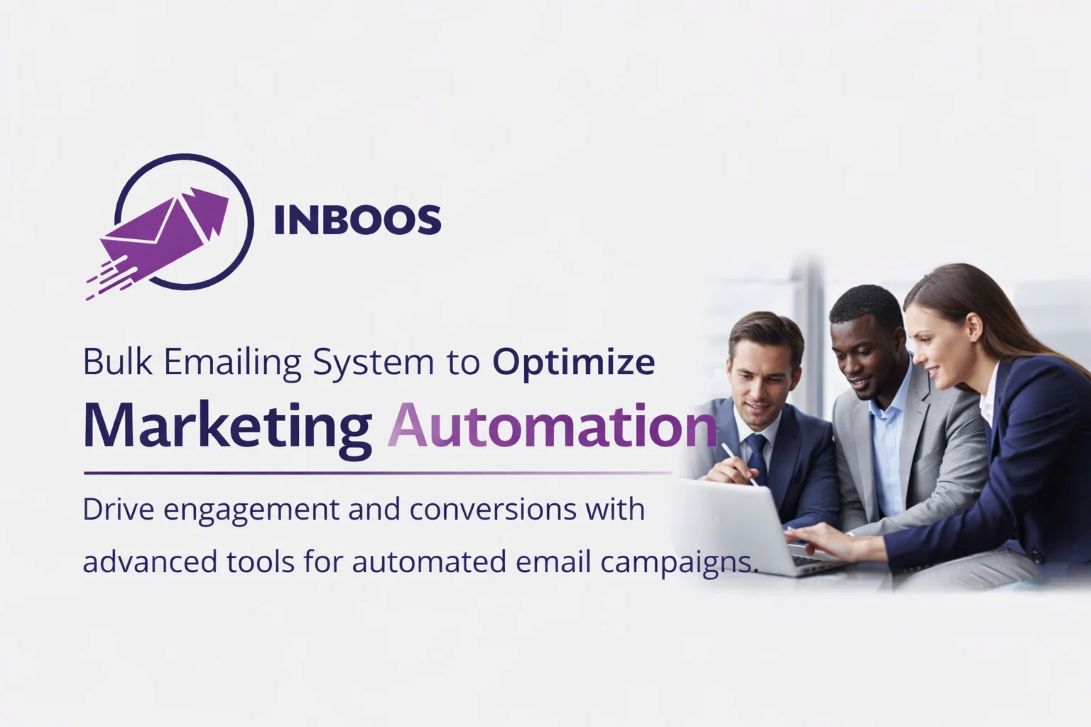Email marketing is one of the most powerful tools for digital communication, but it’s also one of the most targeted by cyber threats. From phishing attacks to spoofed domains, the risks are real—and growing. For businesses that rely on bulk email campaigns, protecting sender reputation and ensuring compliance is no longer optional. It’s essential.
Table of Contents
ToggleThis guide will walk you through how artificial intelligence (AI) is transforming email header authentication, why it matters, and how platforms like Inboos are helping businesses stay secure, compliant, and effective.
What Is Email Header Authentication?
Every email you send carries a hidden layer of information called the email header. This includes technical details like:
- The sender’s domain
- The IP address of the sending server
- Routing information
- Authentication results from protocols like SPF, DKIM, and DMARC
These headers are used by receiving servers to determine whether your email is legitimate or suspicious. If your authentication fails, your email might land in the spam folder—or get blocked entirely.
Why Email Authentication Matters
Email authentication is critical for several reasons:
- It protects your brand from spoofing and impersonation
- It improves deliverability by proving your legitimacy
- It ensures compliance with global regulations like GDPR, CAN-SPAM, and CASL
- It builds trust with recipients and email service providers
Without proper authentication, even well-crafted emails can be flagged as spam or rejected.
The Role of SPF, DKIM, and DMARC
Let’s break down the three key protocols used in email header authentication:
- SPF (Sender Policy Framework) SPF verifies that the sending server is authorized to send emails on behalf of your domain. It’s like a whitelist for your email infrastructure.
- DKIM (DomainKeys Identified Mail) DKIM adds a digital signature to your emails, allowing the recipient’s server to verify that the message hasn’t been tampered with.
- DMARC (Domain-based Message Authentication, Reporting & Conformance) DMARC builds on SPF and DKIM by providing instructions to receiving servers on how to handle failed authentication. It also sends reports back to you so you can monitor your domain’s email activity.
These protocols work together to protect your emails and your brand—but they’re not always easy to configure or maintain.
Common Challenges with Email Authentication
Many businesses struggle with email authentication due to:
- Misconfigured DNS records
- Multiple sending domains or third-party tools
- Lack of visibility into authentication failures
- No centralized monitoring or reporting
- Manual processes that don’t scale
These issues are especially common in bulk email marketing, where thousands of messages are sent daily across different platforms.
How AI Solves These Problems
Artificial intelligence brings a new level of intelligence and automation to email header authentication. Here’s how:
1. Real-Time Header Analysis AI can scan and analyze email headers in real time, identifying inconsistencies, missing records, and potential threats before they impact deliverability.
2. Predictive Threat Detection Machine learning models can detect patterns that indicate spoofing, phishing, or domain abuse—often before traditional filters catch them.
3. Automated Configuration and Monitoring AI can automatically configure SPF, DKIM, and DMARC records based on your sending behavior. It also monitors authentication results and alerts you to issues instantly.
4. Self-Healing Infrastructure Advanced systems can fix broken authentication setups, update DNS records, and optimize sending paths without manual intervention.
5. Compliance Enforcement AI ensures that every email you send complies with global regulations, reducing legal risk and improving trust.
Step-by-Step Guide to Implementing AI-Based Email Authentication
If you’re ready to upgrade your email security and compliance, here’s a step-by-step guide to getting started:
Step 1: Audit Your Current Email Setup
- Identify all domains used for sending emails
- List all third-party tools (CRMs, marketing platforms, etc.)
- Check your current SPF, DKIM, and DMARC records
Step 2: Choose an AI-Powered Email Platform Look for a platform like Inboos that offers:
- AI-driven header analysis
- Automated SPF/DKIM/DMARC configuration
- Real-time compliance monitoring
- Scalable infrastructure for bulk email
Step 3: Configure Authentication Protocols
- Use the platform’s tools to generate and publish correct DNS records
- Test your setup using built-in diagnostics
- Enable DMARC reporting to monitor activity
Step 4: Monitor and Optimize Continuously
- Review authentication reports regularly
- Let AI flag and fix issues automatically
- Adjust sending behavior based on feedback
Step 5: Educate Your Team
- Train your marketing and IT teams on email authentication basics
- Share insights from AI reports to improve campaign strategy
- Make authentication part of your email QA process
Benefits of AI-Driven Email Authentication
By using AI to manage email header authentication, you’ll unlock several key benefits:
- Higher inbox placement and open rates
- Stronger sender reputation
- Reduced risk of spoofing and phishing
- Automated compliance with global laws
- Faster resolution of technical issues
- Better insights into email performance
These benefits translate directly into better engagement, more conversions, and stronger brand trust.
How Inboos Helps You Stay Secure and Compliant
Inboos is built for businesses that rely on bulk email marketing but refuse to compromise on security or compliance. Here’s what makes it different:
- AI-powered SPF/DKIM/DMARC validation before every send
- Smart routing algorithms that adapt to recipient server behavior
- Real-time feedback loops to improve sender reputation
- Header-level diagnostics for every campaign
- Automated compliance enforcement across regions
Whether you’re sending transactional emails, promotional campaigns, or onboarding sequences, Inboos ensures that every message is authenticated, compliant, and optimized for delivery.
Email header authentication is no longer a technical detail—it’s a strategic priority. As threats evolve and regulations tighten, businesses need smarter tools to protect their communications. AI offers the speed, intelligence, and automation required to stay ahead.
If you’re serious about email marketing, bulk email compliance, and secure delivery, it’s time to let AI take the lead. Platforms like Inboos make it easy to send emails that are trusted, authenticated, and built for performance.
📩 Have Questions or Need Expert Help?
Our team is here to make your email marketing, bulk emailing, and mass emailing effortless and effective.
🚀 Let’s boost your deliverability, scale your outreach, and unlock better results!
👉 📌 Contact Us Today
 logo
logo




